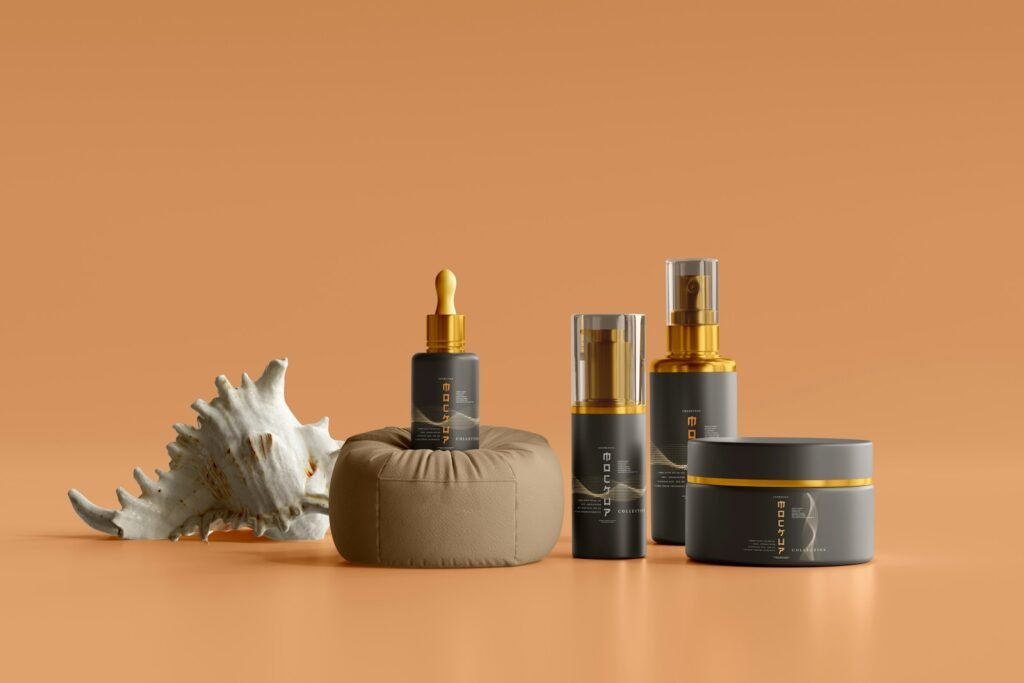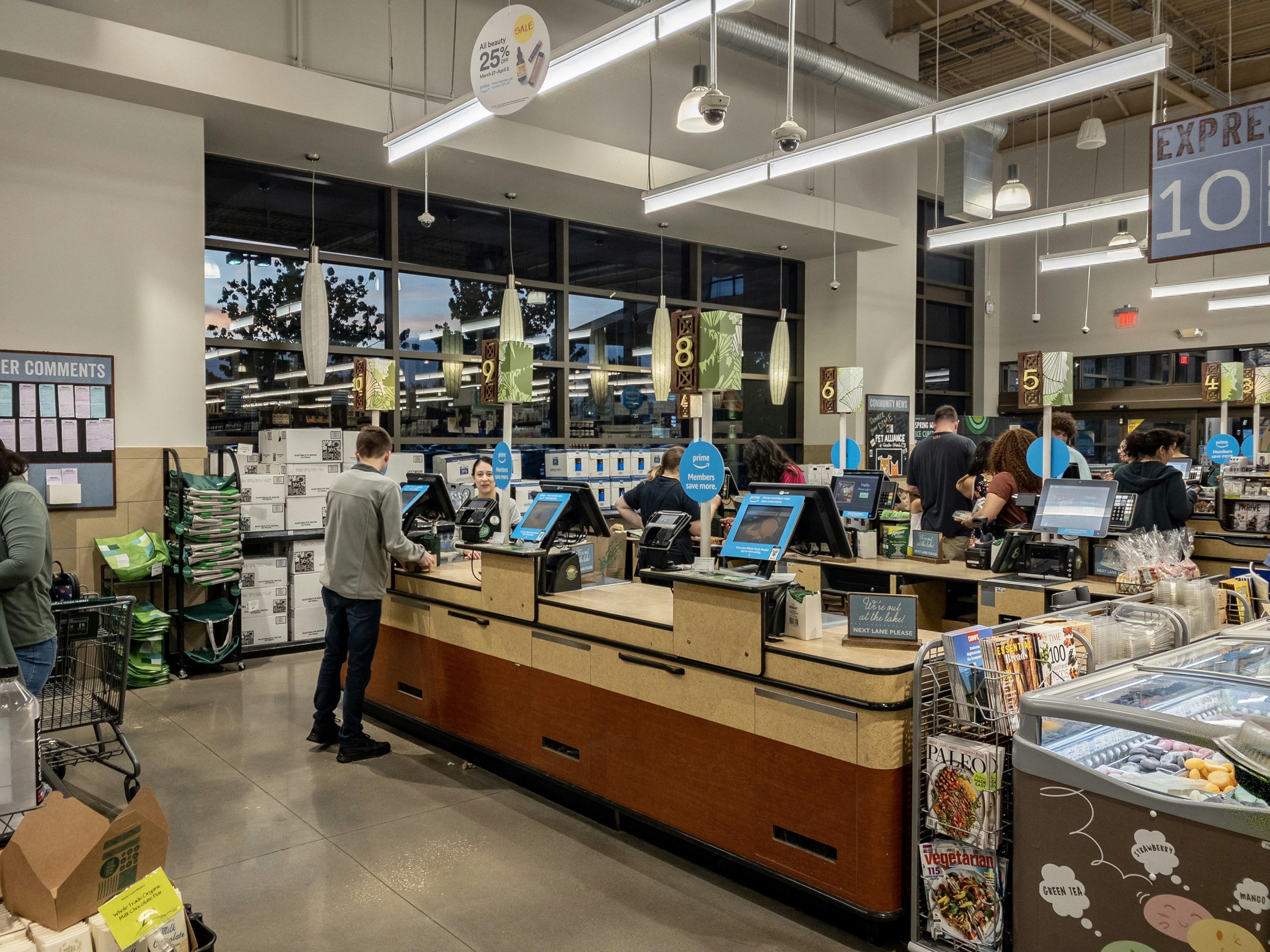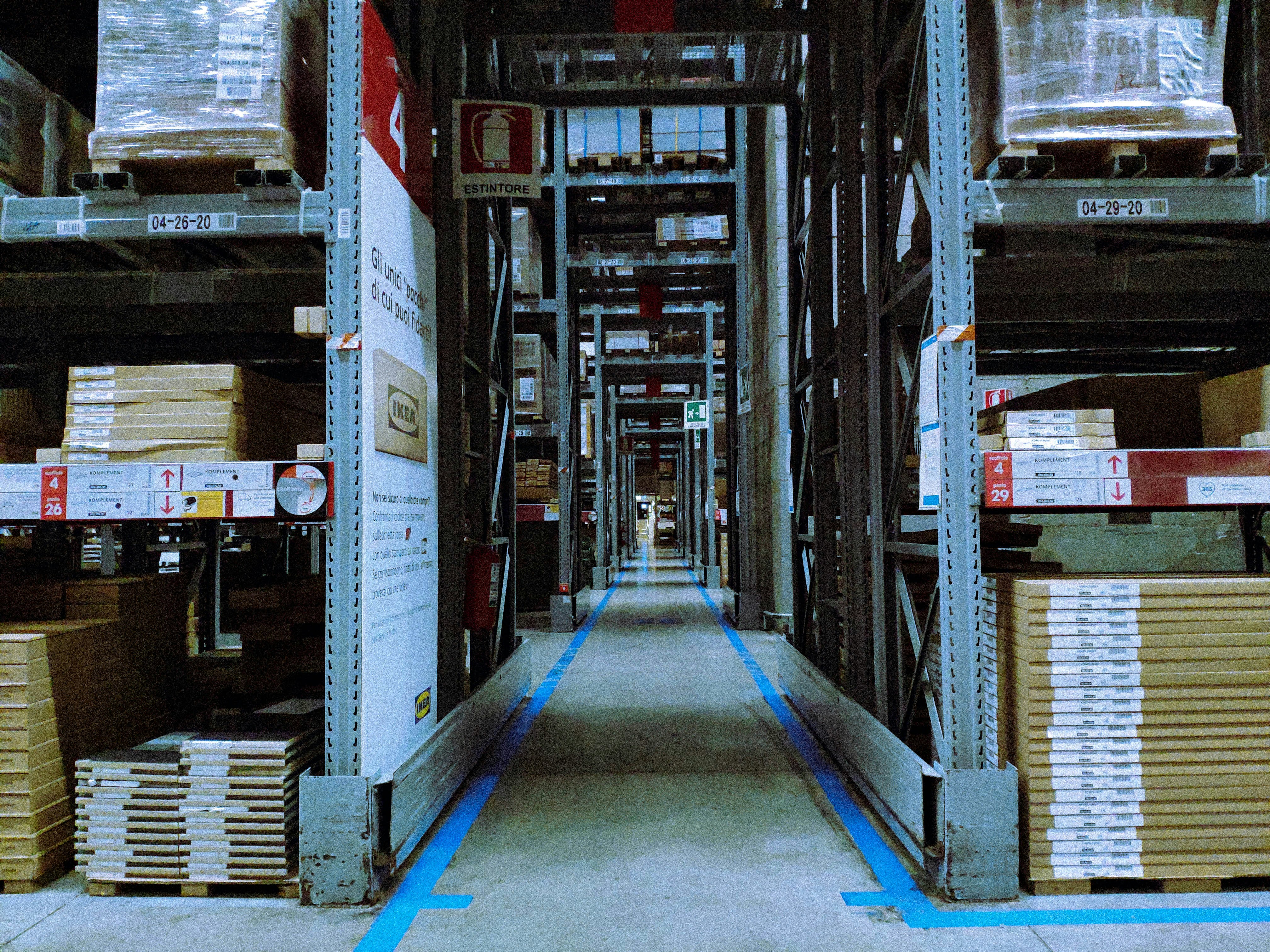Introduction to Beauty Subscription Boxes
Beauty subscription boxes have gained significant traction in recent years, appealing to a diverse audience from makeup enthusiasts to skincare aficionados. This growing trend reflects a shift in consumer behavior, where individuals seek convenience and personalization in their beauty routines. By providing a curated selection of products delivered straight to customers’ doors, these subscription services offer an enticing solution for those wanting to explore new brands and products without the commitment of full-size purchases.
Typically, a beauty subscription box will include a mix of items such as cosmetics, skincare treatments, fragrances, and haircare products. The variety ensures that subscribers can discover and experiment with different beauty items, from luxury brands to indie labels. This aspect of surprise and delight contributes to the overall excitement of receiving a box each month, fostering customer loyalty and engagement. In addition, many subscriptions offer tiered options, catering to different budgets and preferences, thus broadening their appeal.
Another key feature of beauty subscription boxes is their many customization options, enabling recipients to tailor their selections based on personal preferences or skin types. This personalized approach enhances the overall customer experience, ensuring that each box feels unique and catered to individual beauty needs. As a reflection of modern consumer values, beauty subscription services prioritize inclusivity, providing products that cater to a variety of skin tones and types.
Moreover, the convenience of subscription boxes allows beauty enthusiasts to seamlessly integrate new products into their routines, thus simplifying their shopping experience. This combination of variety, personalization, and ease has positioned beauty subscription boxes as a formidable player in the beauty market, appealing to both seasoned enthusiasts and newcomers alike.
The Role of Barcodes in Product Management
Barcodes have become an integral component of product management in various industries, including the rapidly evolving sector of beauty subscription boxes. Their primary function is to enable efficient tracking and management of inventory, which is crucial for maintaining the competitiveness of subscription box companies. By incorporating barcodes into their inventory systems, these companies can improve operational efficiency significantly.
One of the key advantages of barcodes is their ability to streamline the tracking process. Each product can be assigned a unique barcode that serves as a digital identifier. This facilitates accurate tracking of items from the moment they are included in the inventory to the point they are shipped to customers. With the integration of barcode scanning technology, subscription box companies can rapidly process orders and manage stock levels without the risk of human error that often comes with manual entry methods.
In addition to improving tracking, barcodes play a pivotal role in managing stock levels effectively. Subscription box companies can employ barcode technology to monitor inventory in real-time, providing valuable insights into which products are popular and in high demand. This data allows companies to make informed decisions about restocking and adjusting their product offerings to better meet customer preferences. As a result, the optimization of inventory leads to decreased costs associated with excess stock or missed sales opportunities from items being out of stock.
Moreover, barcodes enhance the accuracy of orders. By ensuring that the correct products are picked and packed for each subscription box, companies can minimize the likelihood of errors that could frustrate customers and lead to returns or cancellations. This level of precision fosters customer satisfaction and loyalty, which is particularly important in the competitive beauty subscription market. Thus, the efficient application of barcodes is essential for achieving seamless product management and ensuring long-term success.
Types of Barcodes for Beauty Products
In the beauty industry, various types of barcodes play a crucial role in product identification, inventory management, and enhancing customer experience. The most common barcodes include Universal Product Code (UPC), International Article Number (EAN), and Quick Response (QR) codes, each with their distinct characteristics and applications.
The Universal Product Code (UPC) is one of the most widely recognized barcodes in North America. It consists of 12 digits and is predominantly used for retail products, including beauty items. The UPC provides a unique identifier for each product, simplifying checkout processes and enabling effective inventory management. Beauty subscription boxes that incorporate UPCs can streamline stock tracking and ensure accurate shipments, enhancing overall operational efficiency.
Another essential type of barcode is the International Article Number (EAN). Similar to the UPC, the EAN is a unique identifier but is primarily used on a global scale. It typically contains 13 digits and allows for international commerce, which is particularly beneficial for beauty brands looking to expand their reach into global markets. EANs can help beauty subscription services maintain consistent product identification across various regions, making them integral to successful international sales strategies.
Lastly, Quick Response codes (QR codes) have gained popularity in the beauty sector as they offer interactive engagement opportunities. These two-dimensional barcodes can be scanned with a smartphone, directing customers to additional information such as product details, tutorials, or promotional offers. By including QR codes in beauty subscription boxes, brands can enhance customer experience, fostering direct communication and fostering brand loyalty.
In summary, the use of barcodes in the beauty industry, such as UPCs, EANs, and QR codes, serves to optimize product management and enhance customer interaction. Understanding the specific applications and advantages of each barcode type is essential for beauty brands looking to improve their services and streamline operations.
Benefits of Using Barcodes in Subscription Boxes
The integration of barcodes into beauty subscription boxes presents numerous advantages that enhance both operational efficiency and customer satisfaction. One of the primary benefits is improved accuracy in product tracking. By implementing a barcode system, businesses can ensure that the correct products are placed in each subscription box, thereby minimizing the likelihood of errors. This heightened accuracy not only fosters customer trust but also reduces the costs associated with returns and replacements due to incorrect shipments.
Additionally, barcodes facilitate faster fulfillment processes. Scanning barcodes can significantly speed up the packing and shipping stages, allowing staff to process a greater volume of orders in a shorter time frame. This not only streamlines operations but also empowers companies to respond more swiftly to customer demands and fluctuations in order volume, ultimately leading to a more efficient supply chain.
An enhanced customer experience is another critical benefit of barcode implementation. When customers receive their beauty subscription boxes, the assurance that they have received the correct items leads to a more positive unboxing experience. Furthermore, barcodes enable enhanced tracking capabilities, allowing customers to monitor their shipments in real-time. This feature contributes to heightened transparency and better communication, as customers appreciate being kept informed about their order status.
Lastly, the use of barcodes promotes better data collection for analyzing consumer behavior. Each scan generates valuable data that can be used to identify purchasing trends, streamline inventory management, and tailor marketing strategies based on customer preferences. This data-driven approach not only supports business growth but also further enhances the personalization of subscription offerings. Overall, the incorporation of barcodes significantly strengthens the efficacy of beauty subscription boxes across multiple dimensions.
Implementing Barcodes: Step-by-Step Guide
Implementing a barcode system in beauty subscription box companies can significantly streamline operations and enhance customer experience. The process begins with selecting the appropriate type of barcode. Consider the specific needs of your business, such as the types of products offered and the volume of boxes shipped. Common barcode types include Universal Product Codes (UPC), QR codes, and Code 128. Choosing the right type ensures optimal scanning efficiency and compatibility with inventory management systems.
Once the barcode type is selected, the next step involves generating the barcode labels. Numerous software solutions are available for this purpose, which provide user-friendly interfaces for creating and customizing barcodes. It is essential to include vital information such as product details and expiration dates for improved traceability. After generating the barcodes, printing them accurately is crucial. Quality labels are necessary to ensure that the barcodes remain scannable throughout the shipping and handling processes.
After labels are printed, integrating barcode scanners with your inventory management software is imperative. Many POS systems support barcode scanning, enabling real-time data updates. This integration allows for efficient tracking of inventory levels and helps identify any discrepancies during the fulfillment process. Moreover, it minimizes human error, thus maximizing operational efficiency. Ensure your software is set up correctly to read the selected barcode format and test the process before going live.
Staff training is a significant component of successful barcode implementation. Conduct instructional sessions to familiarize employees with the new system, including how to scan items and handle barcode-related errors. Dedicated training will enhance their confidence and proficiency, which ultimately leads to a smoother inventory management process. By systematically following these steps, beauty subscription box companies can successfully implement barcodes, optimizing their operations and improving overall performance.
Challenges of Using Barcodes in Beauty Subscription Boxes
The integration of barcodes into beauty subscription boxes presents various challenges that companies must navigate to ensure a smooth implementation process. One of the primary hurdles is the technical issues that may arise during the adoption phase. Companies often rely on barcode scanning systems, which may not be compatible with existing inventory management software. This discrepancy can lead to disruptions in operations and may require significant adjustments to the technology infrastructure.
Moreover, the cost of implementing a barcode system can be a barrier for some businesses, particularly small or new companies. The expenses associated with purchasing barcode scanners, designing and printing labels, and updating software can accumulate quickly. Companies must consider whether the benefits of improved inventory accuracy and efficiency outweigh these initial costs. Careful budget planning and financial forecasting are essential to address this challenge effectively.
Training employees is another critical factor to consider when integrating barcodes. Staff must be adequately trained to utilize the new systems, understand the tracking processes, and handle any potential complications that may arise. This training can be time-consuming and may result in temporary declines in productivity as employees adapt to the new system. The investment in employee training is vital to minimize errors and ensure that the barcode system operates efficiently within the beauty subscription box operations.
Additionally, companies may face discrepancies in product tracking, particularly with high turnover rates associated with beauty subscription boxes. Misalignment between physical inventory and barcode records can lead to inaccuracies, affecting subscription fulfillment and customer satisfaction. Implementing a robust protocol for regular audits and reconciliation can mitigate this issue, facilitating a more seamless integration of barcodes within the beauty subscription model.
Future Trends: Technology and Barcodes in Beauty
The beauty industry is undergoing a significant transformation as technology merges with traditional practices, particularly in the realm of product identification and customer interaction. Barcodes are at the forefront of this evolution, paving the way for more interactive and engaging beauty experiences. One of the emerging trends in this sector is the development of mobile scanning applications, which allow consumers to effortlessly scan barcodes and access a wealth of information about beauty products. These applications not only provide ingredient transparency but also allow users to read reviews, watch tutorials, and receive personalized product recommendations based on their preferences.
Furthermore, the integration of augmented reality (AR) with barcode technology is poised to revolutionize how consumers interact with beauty products. By scanning a barcode, customers can unlock an immersive experience, where they can virtually try on makeup or visualize how skincare products will benefit their specific skin types. This synergy between AR and barcodes enhances customer engagement and satisfaction, offering a more informed purchasing journey that is both innovative and enjoyable.
In addition to mobile apps and augmented reality, the evolution of e-commerce platforms is also being influenced by barcode technology. Online shopping continues to flourish, and integrating barcodes into e-commerce operations enables beauty brands to streamline inventory management and improve logistics. This technology allows for real-time tracking of product availability, ensuring that customers can purchase their desired items without delay. Moreover, barcodes can facilitate easier returns and exchanges, fostering brand loyalty through enhanced customer service.
As technology continues to reshape the beauty landscape, incorporating barcodes will play a crucial role in enhancing customer engagement and creating a more tailored shopping experience. With the combination of mobile scanning, augmented reality, and seamless e-commerce integration, the future of barcodes in the beauty industry presents exciting possibilities for both brands and consumers alike.
Case Studies: Successful Barcode Implementation
The implementation of barcode systems in the beauty subscription box industry has proven to be transformative for several companies. One notable example is Birchbox, which integrated barcode technology to enhance its inventory management process. By assigning unique barcodes to each product, Birchbox streamlined product tracking during the fulfillment process. This not only reduced errors but also increased the speed at which boxes were assembled and shipped. Feedback from subscribers indicated a significant improvement in order accuracy and delivery times, which resulted in a higher retention rate among customers.
Similarly, Ipsy has adopted barcode systems to manage its diverse product offerings, which can vary each month. With the introduction of barcodes, Ipsy was able to effectively monitor product popularity, enabling the company to tailor future boxes more closely to customer preferences. The barcodes provided valuable data on consumption patterns, facilitating informed decisions about which brands and products to include in upcoming subscriptions. As a result, Ipsy reported increased customer satisfaction and improved engagement through personalized offerings.
Another compelling case study is found with Glambag, a smaller startup that faced initial challenges in its logistics operations. The company initially struggled with managing inventory across multiple distribution centers, leading to stockouts and unhappy customers. By implementing a comprehensive barcode system, Glambag overcame these obstacles. Each item was tagged with a barcode, allowing their staff to precisely track inventory levels in real time. This swift, accurate system reduced overstock and stockout incidents significantly, leading to an enhanced customer experience and stronger brand loyalty.
These case studies illustrate the benefits of barcode implementation, showcasing how it can improve operational efficiency, customer satisfaction, and overall business performance in the competitive beauty subscription box market.
Conclusion: The Value of Barcodes in the Beauty Subscription Market
The integration of barcodes in the beauty subscription box sector offers significant advantages that cannot be overlooked. Throughout this guide, we have examined the multifaceted role barcodes play in streamlining operations, enhancing inventory management, and improving customer experience. Their implementation allows businesses to automate tracking and managing inventory levels, which ultimately leads to greater operational efficiency. This is particularly crucial in a rapidly evolving market where demand and customer preferences frequently change.
Moreover, barcodes facilitate accurate data collection, enabling companies to gather actionable insights regarding customer behaviors and product performance. With this information, businesses can tailor their offerings to better meet the needs and preferences of subscribers, ultimately fostering loyalty and satisfaction. The use of barcodes simplifies the fulfillment process as it ensures that the right products reach the right customers without delay, reducing errors and returns.
In a highly competitive beauty subscription market, companies must continually seek avenues to distinguish themselves. Implementing barcode systems not only enhances logistical operations but also instills confidence in customers, who appreciate timely and accurate deliveries. Furthermore, the ability to track and analyze data promotes informed decision-making, allowing beauty brands to stay responsive and agile in an ever-changing landscape.
In conclusion, the strategic adoption of barcodes can transform beauty subscription boxes from a logistical challenge into a streamlined assembly line of customer-centric service. Businesses that embrace this technology will likely find themselves at a competitive advantage, reaping both operational benefits and increased customer satisfaction. Therefore, investing in barcode systems may be a key step toward sustained success in the beauty subscription industry.
© barcodly.com- All rights reserved





